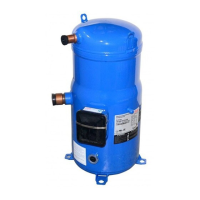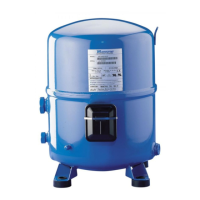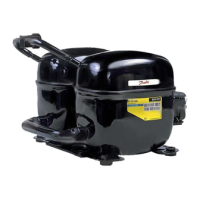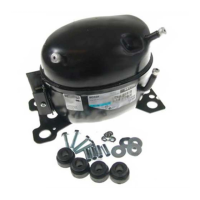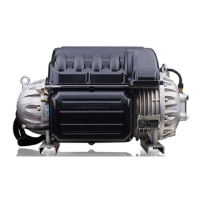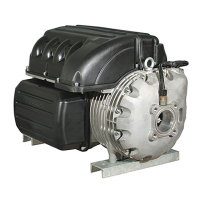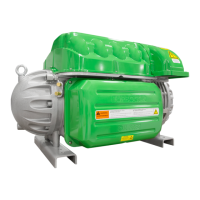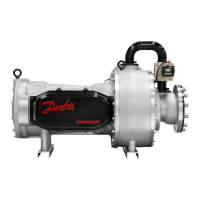Sump heaters
Sump heaters are strongly recommended on
all systems where the compressor is exposed to
low ambient temperatures, especially split and
remote condenser installations. The sump heater
will minimize refrigerant migration caused by
the large temperature gradient between the
compressor and the remainder of the system,
please refer to section "O-cycle migration".
Specic application recommendations
Brazed plate heat
exchangers
A brazed plate heat exchanger needs very little
internal volume to satisfy the set of heat transfer
requirements. Consequently, the heat exchanger
oers very little internal volume for the
compressor to draw vapor from on the suction
side. The compressor can then quickly enter into
a vacuum condition; it is therefore important
that the expansion device be sized correctly
and that a sucient pressure dierential across
the expansion device be available to ensure
adequate refrigerant feed into the evaporator.
This aspect is of special concern when operating
the unit under low ambient and load conditions.
For further information on these conditions,
please refer to the previous sections.
Due to the small volume of the brazed plate heat
exchanger, no pump-down cycle is normally
required. The suction line running from the heat
exchanger to the compressor must be trapped to
avoid refrigerant migration to the compressor.
When using a brazed plate heat exchanger as
the condensing coil, a sucient free volume for
the discharge gas to accumulate is required in
order to avoid excess pressure buildup. At least 1
meter of discharge line is necessary to generate
this volume. To help reduce the gas volume
immediately after start-up even further, the
supply of cooling water to the heat exchanger
may be opened before the compressor starts
up so as to remove superheat and condense the
incoming discharge gas more quickly.
Reversible heat pump
systems
Transients are likely to occur in reversible heat
pump systems, i.e. a changeover cycle from
cooling to heating, defrost or low-load short
cycles. These transient modes of operation
may lead to liquid refrigerant carryover (or
oodback) or excessively wet refrigerant return
conditions. As such, reversible cycle applications
require specic precautions for ensuring a long
compressor life and satisfactory operating
characteristics. Regardless of the refrigerant
charge in the system, specic tests for repetitive
oodback are required to conrm whether
or not a suction accumulator needs to be
installed. A crankcase heater and discharge gas
thermostat are required for reversible heat pump
applications.
The following considerations cover the most
important issues when dealing with common
applications. Each application design however
should be thoroughly tested to ensure
acceptable operating characteristics.
Electronic expansion valve The use of an electronic expansion valve requires
a specic compressor start / stop control.
A specific compressor start sequence control has
to be set when an electronic expansion valve
(EXV) is used. The sequence must be adjusted
according to the EXV step motor speed to allow
time for the EXV to open before the compressor
starts to avoid running under vacuum conditions.
The EXV should be closed at compressor stop
not to let refrigerant in liquid phase entering the
compressor. Ensure that the EXV closes when the
supply voltage to the controller is interrupted (ie
power cut o) by the use of a battery back up.
The compressors should be run for a
minimum period in order to ensure that the
oil has sucient time to properly return to the
compressor sumps and that the motor has
sucient time to cool under conditions of lowest
refrigerant mass ows.
Low load operations
EXV Opened
Closed
Compressor On
O
37
FRCC.PC.003.A5.22
Application guidelines
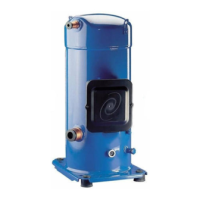
